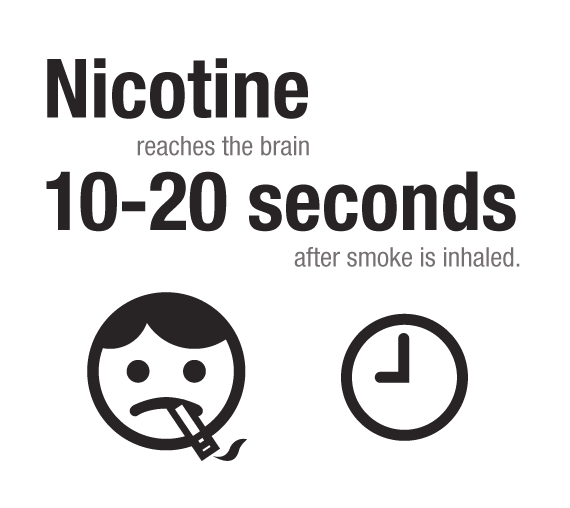Cigarette Facts
When burned, cigarettes contain over 7,000 chemicals. Many are poisonous, and at least 70 are known to cause cancer. The chemicals in cigarette smoke harm more than just the smoker, too. Secondhand smoke results in nearly 50,000 nonsmoker deaths every year.
Cigarette smoking is the source of a long list of chronic diseases, including COPD, bronchitis, emphysema, coronary heart disease, stroke and cancer. Smoking can also cause infertility and peptic ulcer disease, as well as slow the healing of wounds. It’s the leading cause of preventable illness and death in the U.S.


There are many other health effects of nicotine, including nicotine addiction. Nicotine is a highly addictive chemical found in cigarettes, and toxic at certain doses. It negatively affects the brain, nervous system and heart, and excessive exposure can result in poisoning, particularly in young children and pets. It also causes blood vessels to contract, increasing your blood pressure and pulse rates.
Nicotine addiction can happen within 10 seconds of puffing a cigarette. The chemical reaches your brain and regulates your feeling of pleasure. When this effect wears off, it causes you to crave more, which makes it difficult to quit smoking.


What’s in a Cigarette?
- Acetone (found in nail polish remover)
- Acetic Acid (found in vinegar)
- Ammonia (found in toilet cleaner)
- Arsenic (found in rat poison)
- Benzene (found in rubber cement)
- Butane (found in lighter fluid)
- Cadmium (found in battery acid)
- Carbon monoxide (found in car exhaust)
- Formaldehyde (found in embalming fluid)
- Hexamine (found in lighter fluid)
- Lead (found in batteries)
- Naphthalene (found in moth balls)
- Methane (found in sewer gas)
- Methanol (found in rocket fuel)
- Nicotine (found in insecticide)
- Tar (found in paint)
- Toluene (found in industrial solvent)












